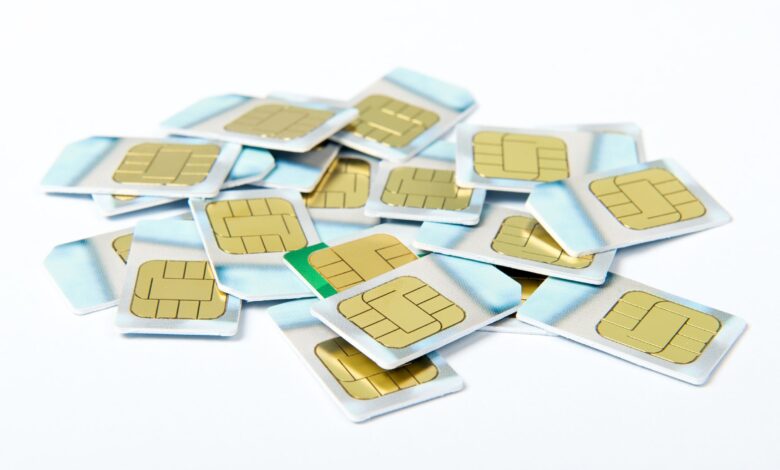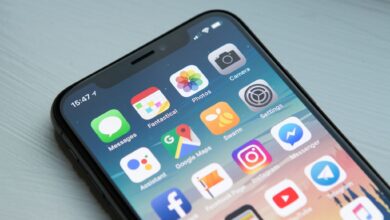
SIM cards are small, removable smart cards used in cell phones and smart phones to store data like your mobile phone number, the phone company you use, your billing information and, in some cases, your address book.
SIM (short for Subscriber Identity Module) cards can be removed from one phone and inserted into others. This makes it easy to transfer phone service and address book info to new phones. Just swap the card to a new phone.
Transferring data by moving SIM cards is a general feature of the cards, but the iPhone doesn’t work that way. More on what SIM cards do on the iPhone later in this article.
SIM cards being swappable also makes them useful for international travel. If your phone is compatible with the cellular networks in the country you visit, you can purchase a new SIM in another country, put it into your phone, and make calls and use data like a local. This is cheaper than using an international data plan.
Not all phones have SIM cards. Other phones have them but don’t allow you to remove them.
Contents
What Type of SIM Card Each iPhone Has
Every iPhone uses a SIM card. There are three types of SIMs used in iPhone models:
- SIM: This is the original type of SIM. The full SIM is the size of a credit card, but the part that contains the important data can be popped out of the larger card and used in a phone.
- micro-SIM: When the iPhone 4 debuted in 2010, it was the first smartphone from any company to use the micro-SIM format. The micro-SIM is substantially smaller than the original SIM.
- nano-SIM: The nano-SIM debuted in the iPhone 5 in 2012. The nano-SIM is about 12% smaller than the micro-SIM.
- eSIM: This SIM card is built into a phone and can be programmed for uses, including as a secondary SIM to let one phone have two phone numbers or phone companies. The eSIM debuted on the iPhone XS series and the iPhone XR.
The SIM type used in each iPhone is:
| iPhone Models | SIM Type |
|---|---|
| Original iPhone | SIM |
| iPhone 3G and 3GS | SIM |
| iPhone 4 and 4S | micro-SIM |
| iPhone 5, 5C, and 5S | nano-SIM |
| iPhone 6 and 6 Plus | nano-SIM |
| iPhone SE | nano-SIM |
| iPhone 6S and 6S Plus | nano-SIM |
| iPhone 7 and 7 Plus | nano-SIM |
| iPhone 8 and 8 Plus | nano-SIM |
| iPhone X | nano-SIM |
| iPhone XS and XS Max | nano-SIM eSIM |
| iPhone XR | nano-SIM eSIM |
| iPhone 11 | nano-SIM eSIM |
| iPhone 11 Pro and 11 Pro Max | nano-SIM eSIM |
| iPhone SE (2nd gen.) | nano-SIM eSIM |
Not every Apple product uses one of these four SIMs. Some iPad models that connect to 3G and 4G cellular data networks use an Apple-created card called an Apple SIM.
The iPod touch does not have a SIM. Only devices that connect to cellular phone networks need a SIM, and since the touch doesn’t have that feature, it doesn’t need a SIM card.
What’s a SIM Card and How Does It Work?
What Data is Stored on iPhone SIM Cards
Unlike some other mobile phones, the iPhone’s SIM is only used to store customer data like phone number and billing information.
The SIM on the iPhone can’t be used to store contacts or other user data. You also cannot back up data to or read data from the iPhone’s SIM. Instead, all data that would be stored on the SIM on other phones is stored in the iPhone’s main storage (or in iCloud), along with your music, apps, and other data.
That means that swapping a new SIM into your iPhone won’t affect your access to the address book and other data stored on your iPhone.
Where to Find the iPhone SIM on Each Model
Here’s where to find the SIM on each iPhone model:
| iPhone Model | SIM Location |
|---|---|
| Original iPhone | Top, between on/off button and headphone jack |
| iPhone 3G and 3GS | Top, between on/off button and headphone jack |
| iPhone 4 and 4S | Right side |
| iPhone 5, 5C, and 5S | Right side |
| iPhone 6 and 6 Plus | Right side, below on/off button |
| iPhone SE | Right side |
| iPhone 6S and 6S Plus | Right side, below on/off button |
| iPhone 7 and 7 Plus | Right side, below on/off button |
| iPhone 8 and 8 Plus | Right side, below on/off button |
| iPhone X, XS, XR | Right side, below on/off button |
| iPhone 11 and 11 Pro | Right side, below on/off button |
| iPhone SE (2nd gen.) | Right side, below on/off button |
How to Remove the iPhone SIM
Removing your iPhone’s SIM is simple. All you need is a paperclip (or the “SIM Removal Tool” that Apple includes with some iPhone models).
- Begin by finding the SIM on your iPhone.
- Unfold a paperclip so that one end of it is longer than the rest.
- Insert the end of the paperclip into the tiny hole next to the SIM.
- Press (but not too hard!) until the SIM card tray pops out.
- Remove the tray and then remove the SIM card from the tray.
These steps are good to know when your iPhone gives a SIM not found error. Fixing that is problem requires a very similar technique.
What is a SIM Lock?
Some phones have a SIM lock. This is a feature that ties the SIM to a specific phone company (usually the one that you bought the phone from originally). This is done in part because phone companies sometimes require customers to sign multi-year contracts and use a SIM lock to enforce the contracts.
Phones without SIM locks are referred to as unlocked phones. You can usually purchase an unlocked phone for the full retail price of the device. This gives you more flexibility of what phone company you use the device with.
After your contract ends, you can unlock the phone for free through your phone company. You can also unlock phones via phone company tools and software hacks.
Do iPhones Have a SIM Lock?
In some countries, especially the U.S., the iPhone is often sold with a SIM lock. However, it is also possible to purchase an unlocked iPhone without the SIM lock. Depending on the country and carrier, you can also unlock an iPhone after a certain period of time under contract.
Can You Convert Other SIM Sizes to Work With iPhone?
Yes, you can convert many SIM cards formats to work with the iPhone. This allows you bring your existing service and phone number from another phone company to the iPhone. Do this you, you have to cut your SIM card down to the size of the micro-SIM or nano-SIM used by your iPhone model. There are some tools available to ease this process, like this one, but we only recommend it for the tech-savvy and those willing to take the risk of ruining their existing SIM card and rendering it unusable.

